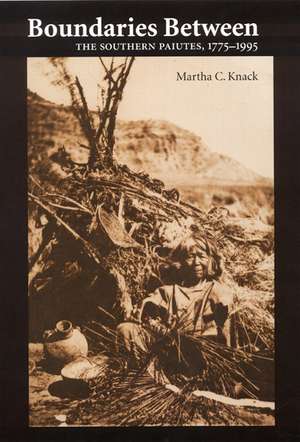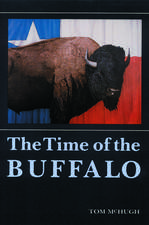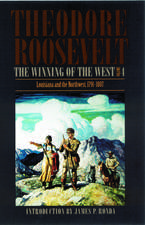Boundaries Between: The Southern Paiutes, 1775-1995
Autor Martha C. Knacken Limba Engleză Paperback – noi 2004
Boundaries Between skillfully relates the history of the Southern Paiutes from their first contacts with Europeans through the end of the twentieth century. In an engaging style, Martha C. Knack combines contemporary oral histories, meticulous archival research, original ethnographic fieldwork, and an astute critical perspective on Indian-white relations. Before the arrival of European Americans, Southern Paiutes foraged the arid hills and valleys of the area known today as southern Utah, northern Arizona, southern Nevada, and southeastern California. By all the “rules” of history and anthropology, such a small-scale, foraging culture should have disappeared long ago, but the Southern Paiutes survive, and their story unsettles assumptions about the role that social complexity, power, and culture play in the dynamics of human history.
Preț: 207.89 lei
Nou
Puncte Express: 312
Preț estimativ în valută:
39.79€ • 41.43$ • 33.62£
39.79€ • 41.43$ • 33.62£
Carte disponibilă
Livrare economică 17 februarie-03 martie
Preluare comenzi: 021 569.72.76
Specificații
ISBN-13: 9780803278189
ISBN-10: 0803278187
Pagini: 471
Ilustrații: 12 illustrations, 5 maps, table, index
Dimensiuni: 152 x 229 x 15 mm
Greutate: 0.64 kg
Editura: Nebraska Paperback
Colecția University of Nebraska Press
Locul publicării:United States
ISBN-10: 0803278187
Pagini: 471
Ilustrații: 12 illustrations, 5 maps, table, index
Dimensiuni: 152 x 229 x 15 mm
Greutate: 0.64 kg
Editura: Nebraska Paperback
Colecția University of Nebraska Press
Locul publicării:United States
Notă biografică
Martha C. Knack is Distinguished Professor of Anthropology at the University of Nevada, Las Vegas. She is the coauthor of As Long as the River Shall Run: An Ethnohistory of Pyramid Lake Reservation and coeditor of Native Americans and Wage Labor: Ethnohistorical Perspectives.
Recenzii
“[Knack’s] focus on interethnic issues puts Boundaries Between on the summit of current ethnohistory: it does not get any better.”—Utah Historical Quarterly
“This excellent work describes how the flexible Southern Paiutes have maintained boundaries between themselves and various groups of outsiders for more than two centuries, while at the same time crossing these boundaries to take advantage of the possibilities afforded by the newcomers.”—American Historical Review
“Outstanding work. Twenty-eight years ‘in the field’ and in some of the U.S.’s most prestigious research libraries have yielded definitive ethnohistorical information.”—Choice
"Knack's book makes a valuable and readable contribution to the history of that region and to the literature on ethnic boundary maintenance."—Robert Bee, The Journal of American History
"Knack's elegant study is the definitive work on Southern Paiutes and a major contribution to the theory of ethnohistory and cultural exchange."—Marcia Clouser, Journal of the West
"This is the combination that we need to assure the continued vitality of ethnohistory. An ethnohistorical work must be good ethnography and it must be good history. Martha Knack has done both and has completed the task with insightful interpretation that helps soften the "boundaries between" ethnology and history."—James Goss, Western Historical Quarterly
“Boundaries Between is an insightful, thoroughly researched, and well-written ethnohistory that . . . should have broad appeal to scholars who are interested in Indian/non-Indian relations in western North America. . . . Having spent more than twenty-five years of her career studying the Southern Paiute, Martha Knack has established herself as a leading authority on the ethnohistory of this Numic-speaking group.”—Brooke S. Arkush, Ethnohistory
“In this groundbreaking study of Southern Paiute ethnohistory, Martha Knack provides a direly needed corrective to such marginalization. . . . A landmark achievement in Great Basin ethnohistory. It should become a standard reference, an essential starting point for scholars interested in this poorly understood region of the American West.”—Ned Blackhawk, New Mexico Historical Review




















